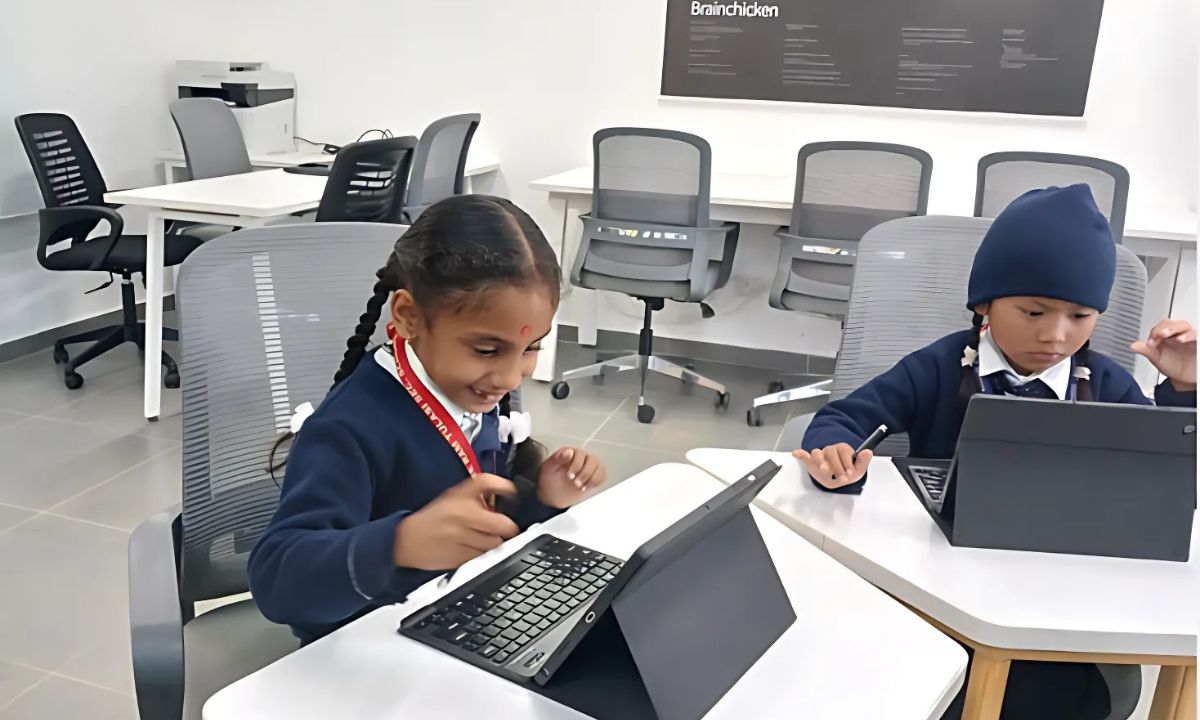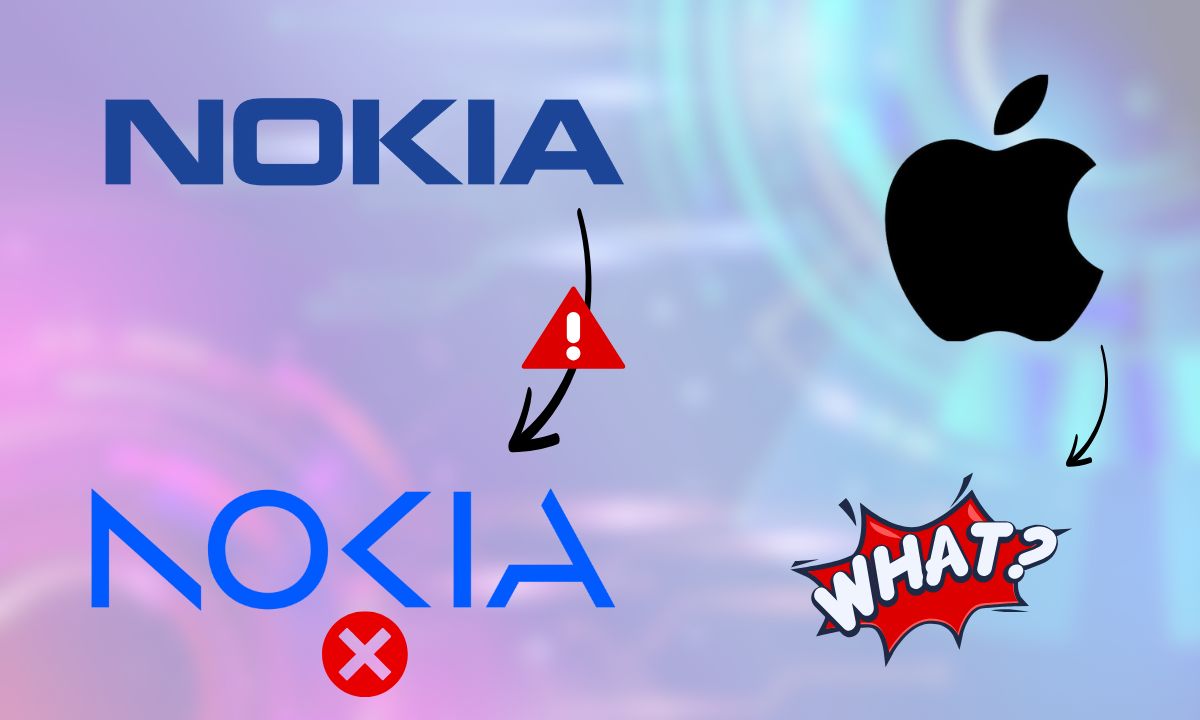The classroom is equipped with advanced technology. In the hands of students, there are not just books, notebooks, and pens, but smart tablets. The students are busy using Google to search for new information. From small to large classrooms, students are sitting and studying in turns, each engrossed in their tasks.
Having the privilege to study with smart tablets is still rare in private schools in Nepal, and it might not even be found in many community schools. However, students at Ram Tulsi Secondary School, located in the rural area of Rampur Municipality-5, Bejhada Bazaar, Palpa, are studying through smart tablets. The use of such advanced technology in a community school gives the atmosphere of a foreign educational setting. With the introduction of technology-based learning, not only students but also parents, local representatives, and the entire community are taking notice of the school.
In one classroom, there is not only a smart tablet in every student’s hand but also a recording studio, computers, laptops, mixers, microphones, and video cameras, similar to what one would find in radio and television studios. However, these advanced technologies are integrated into a single classroom at the school, where teaching is actively taking place. The environment resembles that of major foreign universities, where students can access cutting-edge tools and equipment.
Adopting modern technologies, the school has created an ICT (Information and Communication Technology) classroom and integrated various devices to enhance the learning process. Student Vishisha Ghimire, a participant in this innovative teaching, feels that having the opportunity to access such technologies is a great advantage. She actively uses the smart tablet to search for new knowledge. She mentioned that not every student has access to technology like computers or laptops at home, and the school’s ICT classroom provides an environment where they can gain new skills and knowledge. This technology has created a stronger connection between the students and modern tools.
In the past, students would spend their free time chatting with peers, but now, whenever they have a break, they head to the ICT classroom to engage with technology. Students from all grade levels, from small to large classrooms, are excited about the opportunity to study in the technology-equipped ICT room. The technological environment in the classroom has generated increasing attention, and now there are more visitors observing the school’s activities.
Student Sandeep Pokharel shared his experience, stating that the use of technology has increased his enthusiasm for learning and helped him understand topics more easily by enabling immediate searches on Google. According to him, the technology present in the school has eliminated the need for expensive lessons outside the village and has provided valuable opportunities right at their doorstep. Similarly, student Anisha Shrestha pointed out that using technology has made learning quicker and easier, with the ability to find related information on the internet enhancing their understanding of lessons.
Science teacher Rajan Ghimire emphasized that certain subjects require practical teaching methods, which are made possible by technology. By using digital tools, students can understand complex concepts more quickly and remain eager to learn new things. Teachers have noticed that the integration of technology has made learning more effective, especially for subjects that require a hands-on approach.
The school runs classes for students from the Pre-primary level (Montessori) to the secondary level (Grade 6-10) with a focus on computer education, where students can learn both theory and practical skills. Around 50 students can use smart tablets simultaneously for their lessons. The classroom is equipped with modern facilities such as monitors, video cameras, printers, laptops, microphones, mixers, and separate rooms for recording and editing, along with a well-structured system for group work, which helps students enhance their learning experience.
This technologically advanced ICT classroom was constructed through a partnership between the Ministry of Education and ISE Korea. It was one of the three schools selected in Nepal for such an initiative. Ram Tulsi Secondary School, along with Nepal Secondary School in Baglung, received approval from the Ministry to build and implement this modern facility. The total cost of the project was approximately NPR 1.5 million. The ICT classroom was inaugurated in the previous academic year and began being used for teaching from the current session.
During lessons, teachers can now teach while students can immediately find answers to questions using Google. This instant access to information makes learning more interactive, allowing students to explore additional knowledge related to the topic at hand. According to ICT teacher Chandra Prakash Bhattarai, recording lessons in the studio also allows students to revisit lectures if they didn’t understand something, promoting a deeper understanding through repeated listening.
In today’s 21st century, the school is preparing students to compete internationally by adopting modern technologies that meet their learning needs. The school’s principal, Balakrishna Lamsal, believes that by equipping students with the necessary skills through these new technologies, the school has become capable of providing an education that matches international standards.
The school’s motto, “Learning at Ram Tulsi,” reflects its commitment to offering unique opportunities for students to learn and explore new concepts. Ram Tulsi Secondary School is now recognized for its clean, green, technology-friendly environment, and the principal urges all parents to trust the school and give their children the chance to be introduced to technology-based education.
The school, which was declared a model institution by the Nepal government in 2017, offers education up to Grade 10 in both Nepali and English mediums. It has become a popular choice among students in the Palpa, Syangja, Tanahun, and Nawalpur districts, with approximately 2,700 students currently enrolled. The school has around 100 staff members, including teachers, and has invested in security personnel to ensure the safety of its students.
Apart from providing modern classrooms, the school also has well-equipped laboratories, a library, and a transport system. The school has also set up a well-organized sanitation system, a STEM lab, and a school website for student progress tracking. They’ve ensured the availability of educational materials and a healthy snack system, further enhancing students’ learning environments.
In recent years, the school’s Montessori system, aimed at young children, has become widely popular. With a focus on high educational standards, the school aims to provide a child-friendly, technology-equipped learning environment. Ram Tulsi Secondary School, which started from humble beginnings with open-air classrooms, has now grown into a model institution that is widely recognized for its commitment to quality education.




